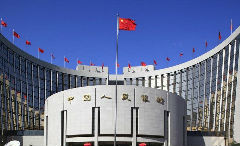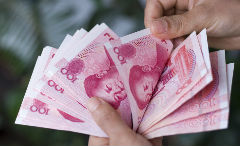Outlook allows for ability to set policy free of outside influence
2017-10-09
China Daily
Despite tighter global cash liquidity, China’s monetary authority feels more confident in its decision to fine-tune rules making it easier for some commercial banks to lend to small businesses and rural borrowers, thanks in part to strong expectations for the economy, a senior central bank official told China Daily in an exclusive interview.
The People’s Bank of China decided on Sept 30 to lower the cash reserve amount by at least one-half of a percentage point required of commercial banks that meet criteria on lending to rural and micro-enterprises. The policy will go into effect next year and is expected to lead to more loans to such businesses.
The choice of “targeted cutting” to the required reserve ratio, instead of a broad-based monetary loosening, will not violate policymakers’ determination to tighten financial regulation and lower banks’ leverage ratio, said the official, who works with central bank’s monetary policy department and the Monetary Policy Committee, but declined to be named.
A reduction of this ratio among all financial institutions used to be done to supplement liquidity, especially when capital outflow surged and foreign exchange reserves fell sharply. “But it is not the logic behind the policy fine-tuning this time,” he said, because a strengthened renminbi is reversing the direction of cross-border capital flow.
A central bank statement explained the reason for reducing the ratio. It said the change will help channel more bank loans to the private and agricultural sectors, aiming to stabilize the real economy, rather than changing the “prudential” policy tone.
Jiang Chao, a researcher at Haitong Securities, said the ratio cut will not trigger a “violent liquidity flood” although it may boost the stock market and strengthen investors’ confidence.
Dan Martin, a senior analyst at the international rating agency FitchRatings, said it should alleviate liquidity pressure for some banks, though overall system liquidity is likely to remain tight in the absence of a general monetary easing.
“Some financial institutions, which have appealed to ease monetary policy, do feel stressed on liquidity during the campaign, taming interbank borrowing in order to prevent systemic risks,” said the central bank official.
The central bank’s move was one week after the US Federal Reserve determined it would wind down quantitative easing starting this month and hinted at a possible interest rate rise by December. It is seen as the end of the world’s easing liquidity environment.
“In a reaction of the US balance sheet normalization program, China will have more initiative to make monetary policy fine-tuning in the future compared with the situation in March and last year, supported by a further stabilized macroeconomic base,” the official said.
“We expect the US dollar index to slightly go stronger within a short term after the rise of its interest rate, but the overall impact on China’s foreign exchange policy is very limited,” he added.
Economists forecast China’s third quarter GDP growth may stay at 6.8 percent, with a five-year high Purchasing Managers’ Index of 52.4 in September. Most recently, international organizations including the International Monetary Fund and the World Bank, have revised up their predictions on China’s growth rate for this year.
The country’s policymakers have realized potential risks along with economic stabilization roughly from boosting monetary supply, as a large part of bank lending went to the real estate bubble or fueled financial assets’ prices with an increasingly dangerous leveraging level.
The central bank official suggested a slower growth rate of broad money supply, or M2, which retreated to a historic low of 8.9 percent in August, mainly because of the control on credit expansion of non-banking financial institutions.
The annual M2 growth target of 13 percent is no longer unbreakable if the policy priority has shifted to curb financial crisis, he said.


